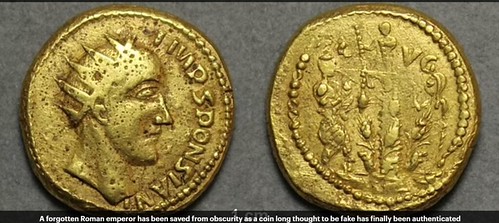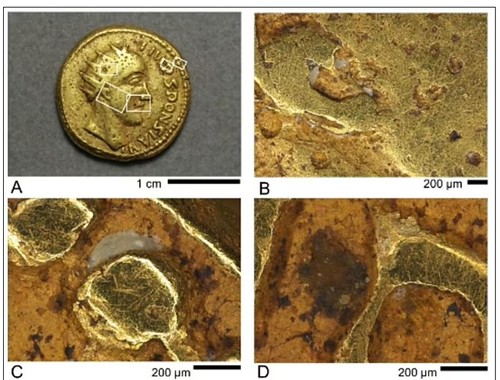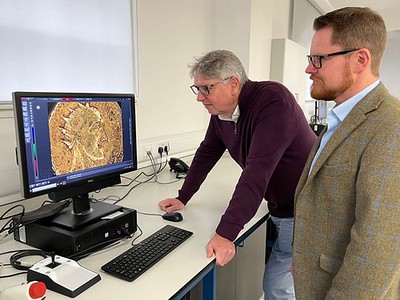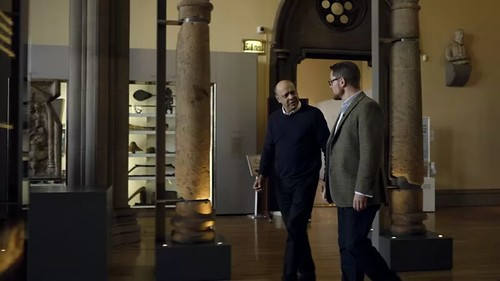
PREV ARTICLE
NEXT ARTICLE
FULL ISSUE
PREV FULL ISSUE
V25 2022 INDEX E-SYLUM ARCHIVE COIN OF SPONSIAN IS GENUINE. OR IS IT?A coin in the Hunterian museum in Glasgow, long thought to be fake, has been declared genuine, but not everyone is convinced. -Editor A forgotten Roman emperor has been saved from obscurity as a coin long thought to be fake has finally been authenticated. The coin, unearthed 300 years ago, depicted a leader named Sponsian who was in power during the 260s AD. It was believed to be a forgery, as it differed from both the manufacture process and general style of Roman coins from the time. There are no other historical records that Sponsian ever existed, but new analysis suggests the coin is indeed authentic. The coin comes from a small hoard unearthed in Transylvania in 1713 which found their way into collections around Europe. Some ended up at The Hunterian museum in Glasgow, where they remained hidden in wooden cabinets until now. Researchers from University College London closely analysed the coins – three of which depicted other known Roman emperors - using a range of techniques, including light microscopy and ultra-violet imaging. On the Sponsian coin, they discovered micro-abrasion patterns typically associated with coins that were in circulation for an extensive period of time. The researchers also analysed earth deposits on the coin, finding evidence that after its use the coin was buried for a prolonged period before being discovered. Together, the new evidence strongly indicate the coin is authentic, the team said. They suggest Sponsian was an army commander in the Roman Province of Dacia during a period of military strife during the 260s AD. Curator of Numismatics at The Hunterian, Jesper Ericsson, said: 'Not only do we hope that this encourages further debate about Sponsian as a historical figure, but also the investigation of coins relating to him held in other museums across Europe.'
To read the complete article, see:
Arthur Shippee, Len Augsburger and Leon Saryan passed along a Wall Street Journal article on the coin. Thanks. -Editor
To read the complete article (subscription required), see:
Howard Berlin passed along a CNN article which quotes some doubters. -Editor Despite the study's findings, some experts, including in the field of numismatics -- the study or collection of currency -- still believe the coin to be fake. "Like everyone in the numismatic world, I strongly believe this coin to be a modern forgery," Jerome Mairat, curator of the Heberden Coin Room in the Ashmolean Museum in Oxford, England, told CNN. "This whole theory -- that the coin is genuine -- is both unscientific and unfounded," he added. Dame Mary Beard, the acclaimed scholar of Ancient Rome and professor of classics at Cambridge University, wrote in a blog post published by the Times Literary Supplement that "there is still very powerful evidence that they are fakes," going on to list a number of issues surrounding their crafting and design.
To read the complete article, see:
On social media Arthur Needham shared a link to the original paper, correctly noting that the article is one journalist's interpretation. Other numismatic experts are not quoted. While the coins may or may not be complete modern forgeries, they could well be contemporary imitations. Thanks also to David Sundman for passing it along. -Editor Authenticating coins of the ˜Roman emperor' Sponsian
Abstract
To read the complete article, see:
Robert Hoge writes: "This is a rather unsatisfactory article. I hope we shall see something more substantive in the near future. The coin still looks suspicious to me. Definitely it has affinity to "Barbarian" issues." David Sundman, David Pickup and Kavan Ratnatunga passed along a BBC News article. Thanks also to Bill Rosenblum who passed along a Fox News version. -Editor
To read the complete article, see:
David Pickup and David Sundman passed along a link from the Hunterian. Thanks, everyone. -Editor
To read the complete article, see:
Wayne Homren, Editor The Numismatic Bibliomania Society is a non-profit organization promoting numismatic literature. See our web site at coinbooks.org. To submit items for publication in The E-Sylum, write to the Editor at this address: whomren@gmail.com To subscribe go to: https://my.binhost.com/lists/listinfo/esylum All Rights Reserved. NBS Home Page Contact the NBS webmaster 
|




